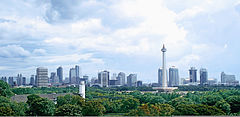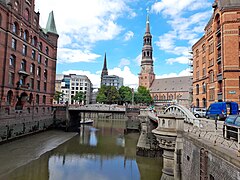
A city is a human settlement of a notable size. The term "city" has different meanings around the world and in some places the settlement can be very small. Even where the term is limited to larger settlements, there is no universally agreed definition of the lower boundary for their size. In a more narrow sense, a city can be defined as a permanent and densely settled place with administratively defined boundaries whose members work primarily on non-agricultural tasks. Cities generally have extensive systems for housing, transportation, sanitation, utilities, land use, production of goods, and communication. Their density facilitates interaction between people, government organizations, and businesses, sometimes benefiting different parties in the process, such as improving the efficiency of goods and service distribution.
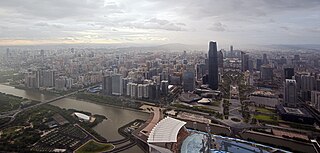
Urbanization is the population shift from rural to urban areas, the corresponding decrease in the proportion of people living in rural areas, and the ways in which societies adapt to this change. It can also mean population growth in urban areas instead of rural ones. It is predominantly the process by which towns and cities are formed and become larger as more people begin living and working in central areas.

Climate change mitigation (or decarbonisation) is action to limit the greenhouse gases in the atmosphere that cause climate change. Greenhouse gas emissions are primarily caused by people burning fossil fuels such as coal, oil, and natural gas. Phasing out fossil fuel use can happen by conserving energy and replacing fossil fuels with clean energy sources such as wind, hydro, solar, and nuclear power. Secondary mitigation strategies include changes to land use and removing carbon dioxide (CO2) from the atmosphere. Governments have pledged to reduce greenhouse gas emissions, but actions to date are insufficient to avoid dangerous levels of climate change.

A carbon footprint (or greenhouse gas footprint) is a calculated value or index that makes it possible to compare the total amount of greenhouse gases that an activity, product, company or country adds to the atmosphere. Carbon footprints are usually reported in tonnes of emissions (CO2-equivalent) per unit of comparison. Such units can be for example tonnes CO2-eq per year, per kilogram of protein for consumption, per kilometer travelled, per piece of clothing and so forth. A product's carbon footprint includes the emissions for the entire life cycle. These run from the production along the supply chain to its final consumption and disposal.
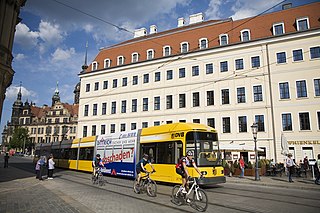
A sustainable city, eco-city, or green city is a city designed with consideration for social, economic, environmental impact, and resilient habitat for existing populations, without compromising the ability of future generations to experience the same. The UN Sustainable Development Goal 11 defines sustainable cities as those that are dedicated to achieving green sustainability, social sustainability and economic sustainability. They are committed to doing so by enabling opportunities for all through a design focused on inclusivity as well as maintaining a sustainable economic growth. The focus will also includes minimizing required inputs of energy, water, and food, and drastically reducing waste, output of heat, air pollution – CO2, methane, and water pollution. Richard Register, a visual artist, first coined the term ecocity in his 1987 book Ecocity Berkeley: Building Cities for a Healthy Future, where he offers innovative city planning solutions that would work anywhere. Other leading figures who envisioned sustainable cities are architect Paul F Downton, who later founded the company Ecopolis Pty Ltd, as well as authors Timothy Beatley and Steffen Lehmann, who have written extensively on the subject. The field of industrial ecology is sometimes used in planning these cities.

C40 Cities Climate Leadership Group is a group of 96 cities around the world that represents one twelfth of the world's population and one quarter of the global economy. Created and led by cities, C40 is focused on fighting the climate crisis and driving urban action that reduces greenhouse gas emissions and climate risks, while increasing the health, wellbeing and economic opportunities of urban residents.

Climate change is an urgent and significant issue affecting Japan. In recent years, the country has observed notable changes in its climate patterns, with rising temperatures serving as a prominent indicator of this phenomenon. As an archipelago situated in northeastern Asia, Japan is particularly vulnerable to the impacts of climate change due to its diverse geography and exposure to various weather systems. The nation experiences a broad range of climates, spanning from the frigid winters of Hokkaido to the subtropical climates of Okinawa. Changes in temperature patterns have the potential to disrupt ecosystems, impact agricultural productivity, modify water resources, and pose significant challenges to infrastructure and human settlements.
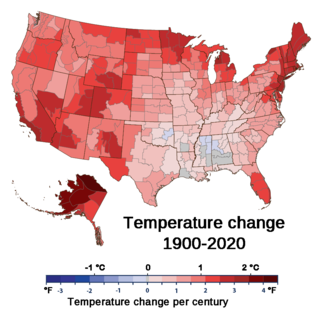
Climate change has led to the United States warming by 2.6 °F since 1970. The climate of the United States is shifting in ways that are widespread and varied between regions. From 2010 to 2019, the United States experienced its hottest decade on record. Extreme weather events, invasive species, floods and droughts are increasing. Climate change's impacts on tropical cyclones and sea level rise also affects regions of the country.

A zero-carbon city is a goal of city planners that can be variously defined. In a narrower sense of energy production and use, a zero-carbon city is one that generates as much or more carbon-free sustainable energy as it uses. In a broader sense of managing greenhouse gas emissions, a zero-carbon city is one that reduces its carbon footprint to a minimum by using renewable energy sources; reducing all types of carbon emissions through efficient urban design, technology use and lifestyle changes; and balancing any remaining emissions through carbon sequestration. Since the supply chains of a city stretch far beyond its borders, Princeton University's High Meadows Environmental Institute suggests using a transboundary definition of a net-zero carbon city as "one that has net-zero carbon infrastructure and food provisioning systems".

Climate change and poverty are deeply intertwined because climate change disproportionally affects poor people in low-income communities and developing countries around the world. The impoverished have a higher chance of experiencing the ill-effects of climate change due to the increased exposure and vulnerability. Vulnerability represents the degree to which a system is susceptible to, or unable to cope with, adverse effects of climate change including climate variability and extremes.

Individual action on climate change can include personal choices with regards to diet, travel, lifestyle, consumption of goods and services, family size and so on. Individuals can also get active in local and political advocacy work around climate action. People who wish to reduce their carbon footprint, can for example reduce air travel and driving cars, they can eat mainly a plant-based diet, use consumer products for longer, or have fewer children. Avoiding meat and dairy foods has been called "the single biggest way" how an individual can reduce their environmental impact. Scholars find that excessive consumption is more to blame for climate change than population increase. High consumption lifestyles have a greater environmental impact, with the richest 10% of people emitting about half the total lifestyle emissions.

Green urbanism has been defined as the practice of creating communities beneficial to humans and the environment. According to Timothy Beatley, it is an attempt to shape more sustainable places, communities and lifestyles, and consume less of the world's resources. Urban areas are able to lay the groundwork of how environmentally integrated and sustainable city planning can both provide and improve environmental benefits on the local, national, and international levels. Green urbanism is interdisciplinary, combining the collaboration of landscape architects, engineers, urban planners, ecologists, transport planners, physicists, psychologists, sociologists, economists and other specialists in addition to architects and urban designers.

The Climate and Development Knowledge Network (CDKN) works to enhance the quality of life for the poorest and most vulnerable to climate change. CDKN does this by combining research, advisory services and knowledge management in support of locally owned and managed policy processes. It works in partnership with decision-makers in the public, private and non-governmental sectors nationally, regionally and globally.
The C40 Cities Climate Leadership Group’s Climate Positive Development Program (Climate Positive) was launched in May 2009 in partnership with the Clinton Climate Initiative and the U.S. Green Building Council. The program brings together leading district-scale new-build and regeneration projects working to achieve "Climate Positive"—or net carbon negative—outcomes in cities around the world. As part of the C40’s Sustainable Communities Initiative, it aims to create a model for large-scale urban communities and to support projects that serve as urban laboratories for cities seeking to grow in ways that are environmentally sustainable, climate resilient, and economically viable.

The Global Covenant of Mayors for Climate & Energy (GCoM) was established in 2016 by bringing formally together the Compact of Mayors and the European Union's Covenant of Mayors. It is a global coalition of city leaders addressing climate change by pledging to cut greenhouse gas emissions and prepare for the future impacts of climate change. The Compact highlights cities' climate impact while measuring their relative risk levels and carbon pollution. The Compact of Mayors seeks to show the importance of city climate action, both at the local level and around the world. The Compact was launched in 2014 by UN Secretary General Ban Ki-moon and former New York City Mayor Michael Bloomberg, the UN Special Envoy for Cities and Climate Change. The Compact represents a common effort from global city networks C40 Cities Climate Leadership Group (C40), ICLEI, and United Cities and Local Governments (UCLG), as well as UN-Habitat, to unite against climate change. 12,500 cities and local governments have committed to the Compact of Mayors. These cities hail from 6 continents and 144 countries. In total, they represent more than 1 billion people.
Climate drawdown refers to the future point in time when levels of greenhouse gas concentrations in the atmosphere stop climbing and start to steadily decline. Drawdown is a milestone in reversing climate change and eventually reducing global average temperatures. Project Drawdown refers to the nonprofit organization with the mission to help the world reach drawdown and stop catastrophic climate change quickly, safely, and equitably. In 2017, a publication titled "Drawdown" became a New York Times bestseller, which highlighted and described different solutions and efforts available to help reach this goal.

Climate change in Indiana encompasses the effects of climate change, attributed to man-made increases in atmospheric carbon dioxide, in the U.S. state of Indiana.
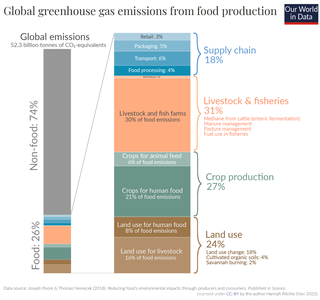
The amount of greenhouse gas emissions from agriculture is significant: The agriculture, forestry and land use sector contribute between 13% and 21% of global greenhouse gas emissions. Emissions come from direct greenhouse gas emissions. and from indirect emissions. With regards to direct emissions, nitrous oxide and methane make up over half of total greenhouse gas emission from agriculture. Indirect emissions on the other hand come from the conversion of non-agricultural land such as forests into agricultural land. Furthermore, there is also fossil fuel consumption for transport and fertilizer production. For example, the manufacture and use of nitrogen fertilizer contributes around 5% of all global greenhouse gas emissions. Livestock farming is a major source of greenhouse gas emissions. At the same time, livestock farming is affected by climate change.

Sustainable Development Goal 11, titled "sustainable cities and communities", is one of 17 Sustainable Development Goals established by the United Nations General Assembly in 2015. The official mission of SDG 11 is to "Make cities inclusive, safe, resilient and sustainable". The 17 SDGs take into account that action in one area will affect outcomes in other areas as well, and that development must balance social, economic and environmental sustainability.
Mumbai Climate Action Plan, a state-government initiative, was established in 2021 to tackle and solve the increasing challenges of climate change. It was officially launched in March 2022. This Planning process was unveiled by the former Environment Minister of Maharashtra, Aaditya Thackeray in September 2021 after Mumbai joined the C40 Cities Network in December 2020. This climate action plan is being drafted by the Brihanmumbai Municipal Corporation (MCGM) in assistance with World Resources Institute (WRI), a knowledge partner. This plan will serve as a 30-year roadmap and systematic framework to guide the city, Mumbai, and look climate resilience with mitigation and adaptation strategies through low-carbon, resilient, and inclusive development pathways. Being India's first climate action plan, it is aiming to set net-zero greenhouse gas emissions and green targets for 2050, twenty years before the target set by the Central Government of India at the Glasgow COP summit in 2021. The six key action areas and strategies laid out in this plan are: Sustainable Waste Management, Urban greening & biodiversity, Urban flooding & water resource management, Energy & buildings, Air quality and Sustainable Mobility.
